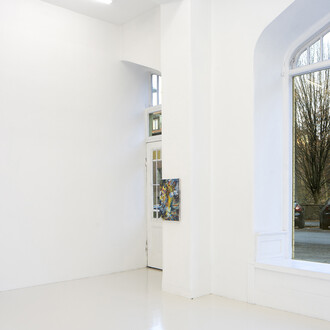Did you know that Andy Warhol’s first solo exhibition at a museum was at Moderna Museet in Stockholm in 1968? Criticism for pro-American propaganda was anticipated – but the reactions were divided. “Warhol 1968” is an exhibition about this exhibition. It also attempts to explore the complexity of Warhol’s oeuvre from the perspective of the pivotal year of 1968.
Until 1968, Andy Warhol’s art was a blend of fascination and revulsion for the mass media and consumerism. With his background in advertising, Warhol understood the commercial mechanisms of our society, something he monotonously and with seeming indifference came to mirror in his art.
1968 was turbulent politically and culturally, in Sweden and globally. It was also a dramatic year for Warhol on a private level, and he was the victim of a murder attempt a few months after the Stockholm exhibition closed. His practice would take a partly new direction from thereon. Warhol became more commercially calculating in his art, and turned his signature into a trademark that could be used in a variety of media.
“Warhol 1968” revisits the exhibition in 1968, featuring the now famous cow wallpaper, wall photos from the exhibition, quotes and reviews, juxtaposing them with works from the Museum collection, including Marilyn Monroe in Black and White (1962), Brillo Boxes (1964), Chelsea Girls (1966), Ten-Foot Flowers (1967), Electric Chair (1967), Mao (1973), and Body Builder (Hands on Hip) (1982–1987).
Due to the left-oriented political climate in 1968, the Andy Warhol exhibition was expected to be criticised as American propaganda. However, the opinions of Sweden’s art critics differed widely.
Evening tabloid Aftonbladet’s art critic Bengt Olvång wrote: “We prefer Oldenburg, with his naive delight in plastic objects and his generous warmth for people and their games in this reified society. We feel sympathy for Rosenqvist, who, in the latest issue of Studio International, subscribes to ‘a social realism in blue’. But we can’t deny Warhol his position as an intensive, disillusioned truth-seeker.”
In the broadsheet Dagens Nyheter, the art critic Ulf Linde was far more dismissive: As a word loses its meaning if repeated long enough, his images eventually lose any vestige of meaning that they may originally have had. All that remains is ‘superficiality’.”
“Warhol 1968” features different versions of his Brillo Boxes, as a distinct connection between the time before and after 1968. They also describe the development of Warhol’s artistic practice and might lead to discussions about what can be regarded as original and copy in art.















